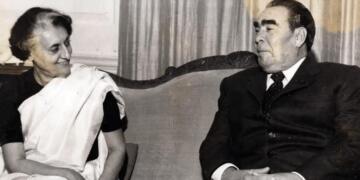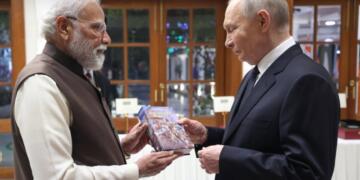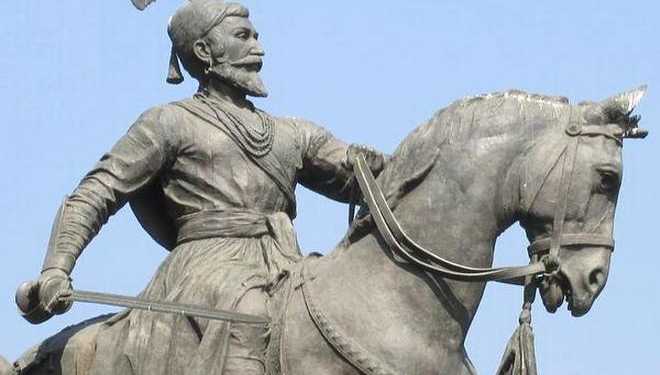Chhatrapati Shivaji was one of the greatest men to be born in this country. His exemplary vision and courage gave us “swarajya” from the clutches of Mughals and Turkic sultanates. A lot has been written about his prowess on the battlefield. The incidents involving Afzal Khan, Shaiste Khan, the battle at Kolhapur, the siege of Salher (a fort near Nashik) are legendary and excellent examples of how Shivaji put the terrain and the meager resources at his disposal to good use to win against far more formidable enemies. But bravery and cunning were gifts found in ample measure even among Shivaji’s adversaries – the Rajputs and Pathans. The greatness in Shivaji is the thought behind his action, the inspiration behind his actions. When we think of Shivaji as an idol, this facet of his personality must be borne in mind. Certainly, the Rajputs and Pathans against whom Shivaji fought were also sacrificing their lives on the battlefield, but for what purpose? Weren’t their sacrifices for a foreign power – that of the Mughal? And Shivaji’s soldiers’ were for the lofty ideal of a swarajya. This is a major difference that we must bear in mind.
Shivaji’s life was an inspiration not just for his own generation but for future generations too. Maharaja Chhatrasal Bundela in particular and Lachit Barphukan to a lesser extent, were influenced by the heroics of Chhatrapati Shivaji. Furthermore, Chhatrapati Sambhaji, Chhatrapati Rajaram, Bajirao Peshwa, Ahilyabai Holkar et cetera were the ones who strove to follow in the great king’s footsteps. Wherever the later Marathas tried to follow the policies laid down by Shivaji, greatness has awaited them!
So what indeed were the policies of Shivaji that have rendered him a giant of his age?
First and foremost, the ideal of swarajya. Shivaji believed that Afghans, Turks, Uzbeks, Persians, Abyssinians and other foreigners had no right to rule this land, its people and decide its fortunes. This does not mean that Chhatrapati Shivaji wanted power for personal gain only. His soldiers fought for the ideal of swarajya. For Shivaji, swarajya was always bigger than himself. This is the main reason that the Marathas could fight for 27 long years against the mighty Mughal empire after his death, and later blossom into the Maratha empire.
Today, we treat rights given to us by birth in this democracy for granted. We have self-rule, but many don’t make an effort to even vote! We take it for granted that our soldiers will always be there to guard our borders and uphold the Indian Constitution, that no matter what happens in the country, the Army will always keep the tri colour flying high. These ideas we take as modern and routine. The very fact that Chhatrapati Shivaji was thinking along these lines but only sans selfishness 300 years ago shows his greatness.
Another of Shivaji’s traits as a military commander is seen in his behaviour after a victory. Unlike previous Hindu kings who would rest on their laurels and let the enemy go scot-free, Shivaji began a trend of menacing the opponent when he was down and defeated – sometimes by entering the enemy’s territory. This, coming from a Hindu king, was unheard of for the invaders! In this regard, noted historian Narhar Kurundkar says, “Hindu kings had two traits – status quo in victory and annihilation in defeat. Shivaji overturned both and its impact has been immense.”
The third point I wish to make is that Shivaji was not merely a great warrior, but also a great thinker, and an ideal ruler. He had full knowledge about the religious and cultural unity of this great land, and this cultural oneness was the driving force behind his fight for a Hindavi Swarajya!
Now let us turn to a few personalities in the annals of history who were inspired by the great persona of Shivaji :
Maharaja Chhatrasal Bundela
In the year 1661, a Mughal sardar from Bundelkhand named Champat Rai rose in revolt against the Mughal emperor. One day, Aurangzeb attacked his base at Mahoba and killed him and his wife after imprisoning them. At that time his son, Chatrasal, was merely fourteen years old. He joined Mirza Raje Jai Singh’s famous campaign to the Deccan in 1665. He hoped to obtain a good share of the spoils of war and looting from the conflict that was to follow against Shivaji. With this aim in mind, he had joined the Mughal army. Moreover, he was personally present during the infamous siege of Purandar. In the course of this campaign however, Chhatrasal realized that Shivaji was fighting for the very same ideals that his father, ChampatRai, had sacrificed his life for! How could he, Chhatrasal, be serving then in the Mughal army? And Shivaji was the one he was supposed to emulate, not oppose.
This storm in Chhatrasal’s mind has been brought out beautifully in his own words –
पिताहमारेसूबाडॉंडे | तुरकनपरअजमायेखांडे ||
तिनचंपतिकेनंदहम, ससिनवावैकाहि ||
हमभूलेसेयौवृथा, हितुजानिकैवाहि ||२||
ऐडएकसिवराजनिबाही | करैअपनेचितकीचाही ||
आठपातसाहीझुकझोरे | सुबनिबाँधिडाँडलैछौरे ||
ऐसेगुनसिवराजके | बसेचित्रमेंआइ ||
मिलिवोईमनमेंधन्यो | मनसिमतज्यौबनाई ||४||
This means : My father stood against the Turks with sword in hand. What kind of son am I, which bows to those same Turks? And then there is Shivaji, a truly great person, who is standing against the Paatshah. Shivaji has bravely faced eight sultans. I will be blessed if I get the chance to meet Shivaji.
Shivaji received Chhatrasal’s letter. He advised him to fight and liberate his Bundelkhand. For this job, Chhatrasal was more than capable, Shivaji believed.
In Kavi Bhushan’s words –
सिवाकिसासुनिकैकही, तुमीछत्रीसिरताज |
जीतअपनीभूमकौ, करौदेशकौराज ||
करौदेशकोराजछतोरे, हमतुमतैंकबहूँनहिंन्यारे ||
दैरिदेसमुगलनकेमारौ | दबटिदिलीकेदलसंहारौ ||
तुरकनकीपरतीतनमानौ | तुमकेहारतुरकनगजजानौ ||
तुरकनमेनविवेकविलोक्यौ | मिलनगयेउनकौतुमरोक्यौ ||
हमकोभईसहाइभवानी | भयनहिमुगलनकीमनमानी ||
छलबलनिकसिदेंशमेंआये | अबहमपैउमराइपठाये ||
हमतुरकनपरकसीकृपानी | मारिकरेंगेकीचकधानी ||
तुमहूँजाइंदेसदलजोरौ | तुरकमारीतरवारनितौरौ |
राखिहियैव्रजनाथकौ, हाथलेडकरवार |
येरक्षाकरिहैसदा, यहजानोनिरधार ||७||
In this way, being inspired by Chhatrapati Shivaji, Chhatrasal Bundela left for Bundelkhand. In 1671, with but a handful of soldiers, he revolted against Aurangzeb. Mahoba, Orccha, Panna, one by one all of Bundelkhand was liberated from the vile Mughal rule. During the time, Aurangzeb was engaged in the Deccan, fighting against the Marathas. Chhatrasal Bundela totally obliterated Mughal rule in Bundelkhand. He was blessed with a long life. He saw boththe failure and death of Aurangzeb, and the destruction of the Mughal empire, in his lifetime. Maharaja Chhatrasal Bundela would come in contact with the Marathas once again, during the days of Peshwa Bajirao, making him one of the very few persons to have dealt directly with both Chhatrapati Shivaji and Peshwa Bajirao!
Lachit Barphukan
The land of Assam has a glorious history of beating back invading armies for years and years on end. The Tai Ahom dynasty has beaten back at least seventeen invasions by various sultans from Delhi or Bengal. But in 1663, Mir Jumla emerged victorious. A major part of Assam had to be given to the Mughals. Soon efforts began to reclaim this portion. At the same time, the Mughals were reeling under attacks made by Shivaji far away in the Deccan. This Mughal-Maratha fight, in its own small way, inspired the Tai Ahom king Chakradhwaj Singha and his commander Lachit Barphukan. Chakradhwaj Singha, in one of his letters to the raja of Koch Behar (Cooch Behar) writes –
“You had sent the message that war had broken out between Shiva and the Mughals. Shiva has defeated them in battle and pushed them back to twenty days march. We must also work accordingly.”
In the famous battle of Saraighat in 1671, Lachit Barphukan handed a crushing defeat to the Mughals and drove them out of Assam for all time to come.
*(Originally written in Marathi for Vedantshree Magazine. Reproducing translation with permission.)
References :
- NarharKurundkar’s preface to Shriman Yogi
- KaviBhushan
- Shivaji– The Great Maratha : H.S. Sardesai




























